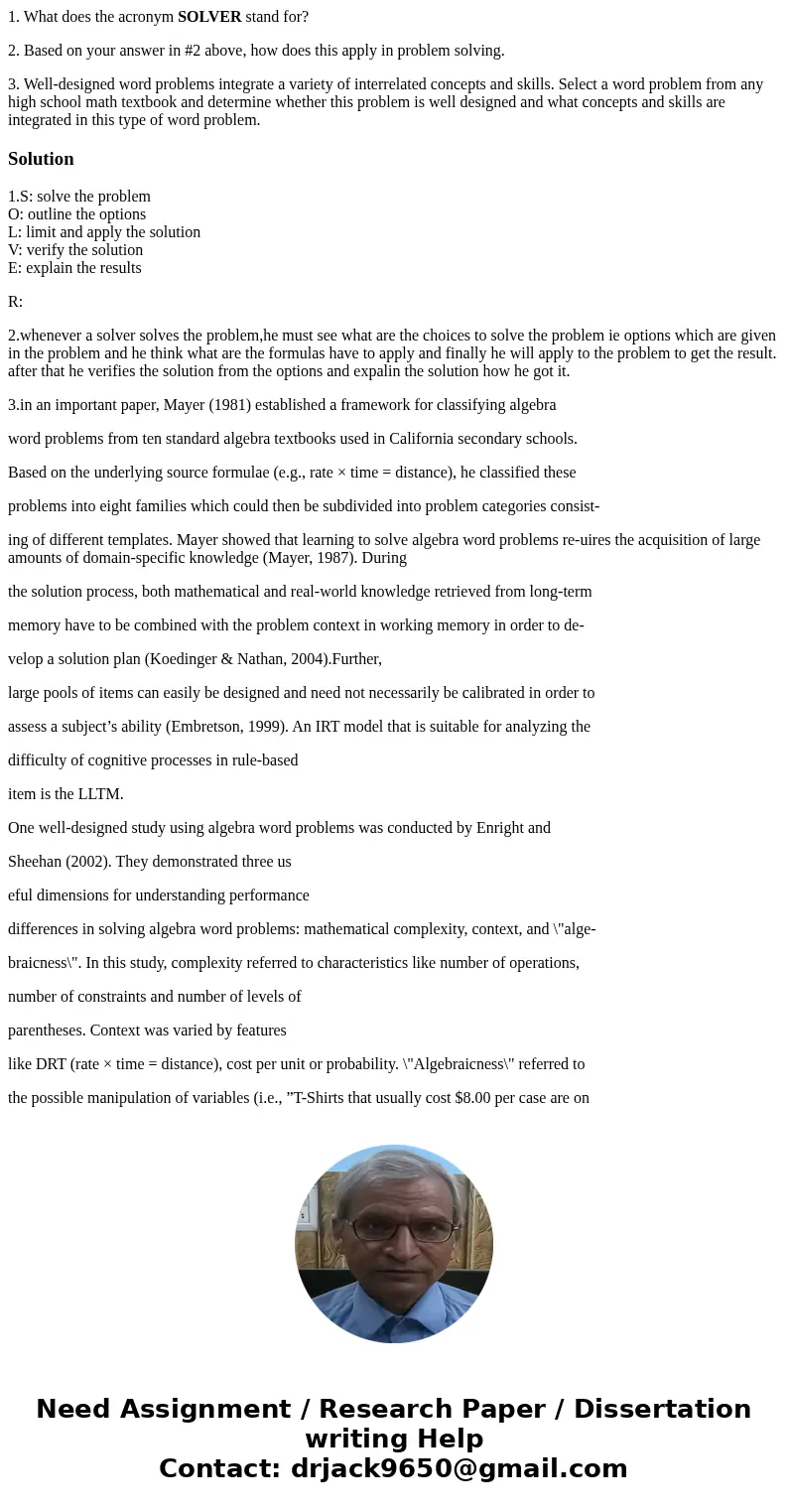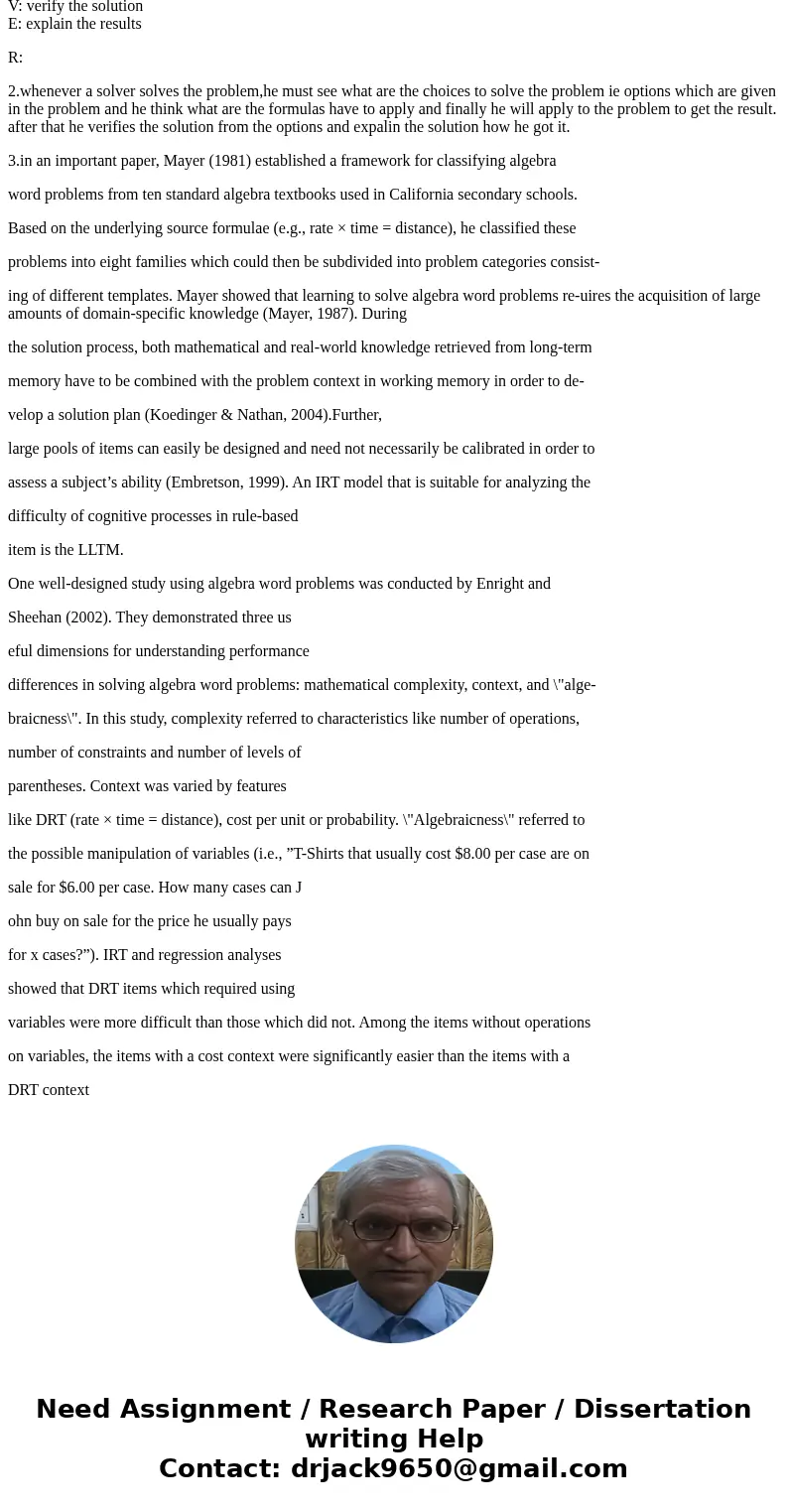1 What does the acronym SOLVER stand for 2 Based on your ans
1. What does the acronym SOLVER stand for?
2. Based on your answer in #2 above, how does this apply in problem solving.
3. Well-designed word problems integrate a variety of interrelated concepts and skills. Select a word problem from any high school math textbook and determine whether this problem is well designed and what concepts and skills are integrated in this type of word problem.
Solution
1.S: solve the problem
O: outline the options
L: limit and apply the solution
V: verify the solution
E: explain the results
R:
2.whenever a solver solves the problem,he must see what are the choices to solve the problem ie options which are given in the problem and he think what are the formulas have to apply and finally he will apply to the problem to get the result. after that he verifies the solution from the options and expalin the solution how he got it.
3.in an important paper, Mayer (1981) established a framework for classifying algebra
word problems from ten standard algebra textbooks used in California secondary schools.
Based on the underlying source formulae (e.g., rate × time = distance), he classified these
problems into eight families which could then be subdivided into problem categories consist-
ing of different templates. Mayer showed that learning to solve algebra word problems re-uires the acquisition of large amounts of domain-specific knowledge (Mayer, 1987). During
the solution process, both mathematical and real-world knowledge retrieved from long-term
memory have to be combined with the problem context in working memory in order to de-
velop a solution plan (Koedinger & Nathan, 2004).Further,
large pools of items can easily be designed and need not necessarily be calibrated in order to
assess a subject’s ability (Embretson, 1999). An IRT model that is suitable for analyzing the
difficulty of cognitive processes in rule-based
item is the LLTM.
One well-designed study using algebra word problems was conducted by Enright and
Sheehan (2002). They demonstrated three us
eful dimensions for understanding performance
differences in solving algebra word problems: mathematical complexity, context, and \"alge-
braicness\". In this study, complexity referred to characteristics like number of operations,
number of constraints and number of levels of
parentheses. Context was varied by features
like DRT (rate × time = distance), cost per unit or probability. \"Algebraicness\" referred to
the possible manipulation of variables (i.e., ”T-Shirts that usually cost $8.00 per case are on
sale for $6.00 per case. How many cases can J
ohn buy on sale for the price he usually pays
for x cases?”). IRT and regression analyses
showed that DRT items which required using
variables were more difficult than those which did not. Among the items without operations
on variables, the items with a cost context were significantly easier than the items with a
DRT context


 Homework Sourse
Homework Sourse